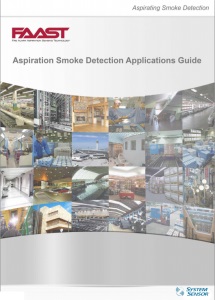
by Brianna Crandall — February 23, 2015—A new in-depth Fire Alarm Aspiration Sensing Technology (FAAST) Aspiration Smoke Detection Applications Guide has been released by global technology provider Honeywell this month in order to aid system integrators, consultants, specifiers and installers during the specification, design, installation and commissioning process. Facilities maintenance personnel can also benefit.
Choosing the right fire detection method for a specific environment can have wide-reaching benefits not only in terms of the level of protection provided, but also economic advantages such as reduced downtime and improved maintenance, notes Honeywell.
Aspiration smoke detection (ASD) — where air is drawn through sampling holes in a pipe network for smoke particulate analysis — has become one of the premier detection methods in challenging applications, due to its adaptability for diverse applications.
The guide details aspiration device benefits and application considerations, along with best practices for installation, commissioning, and maintenance. It draws on industry codes of practice and guidance from key associations and focuses on the FAAST Fire Alarm Aspiration Sensing Technology range.
Key applications covered include: telecoms, large open spaces, extreme temperature locations, dirty environments, transportation facilities, historic and cultural sites, and ducts and lift shafts.
Gintare Budriunaite, marketing manager, specialty products, Honeywell Fire Safety, said, “We developed the guide to provide a detailed, informative resource for anyone interested in learning more about the implementation of aspiration smoke detection in specific environments. It provides particular value to those working in areas where earliest detection is required, interior design aesthetics cannot be compromised, standard detection methods fail, and areas with restricted or limited access. We are seeing significant growth in the use of aspiration technology in these applications and many more for its ability to meet specific challenges.
“Ever-evolving safety standards and insurance prerequisites are driving fire protection to new levels, which is in turn increasing the demand for advanced detection technologies. Next-generation ASDs, such as FAAST from Honeywell, go one stage further, incorporating state-of-the art technologies designed to deliver the earliest and most accurate fire detection in the most challenging applications, while removing the false alarm issues that plague so many sites and industries.”
The FAAST Aspiration Smoke Detection Applications Guide is available for download from the FAAST site. For more information on FAAST technology, visit the Web site.





